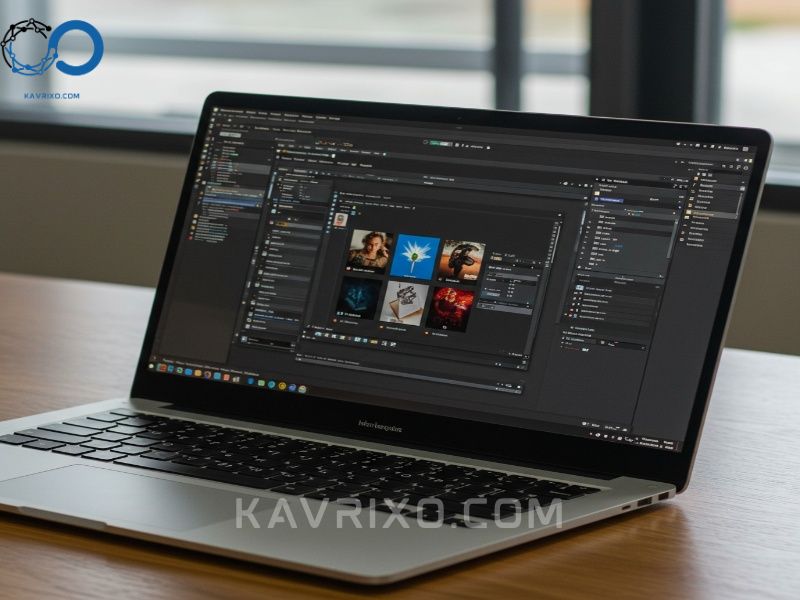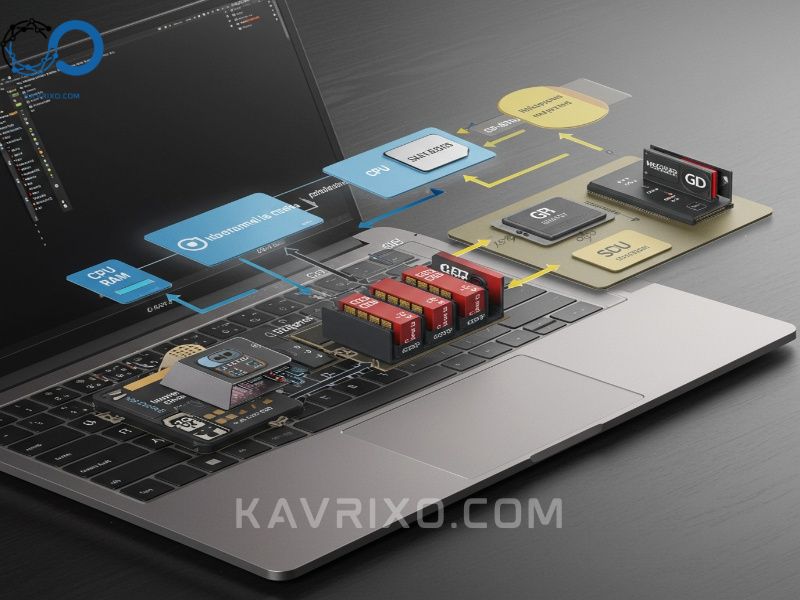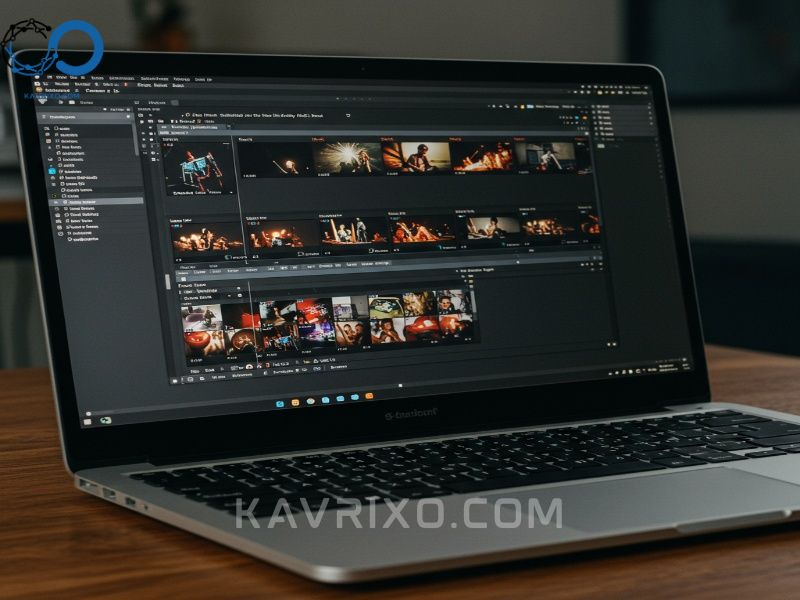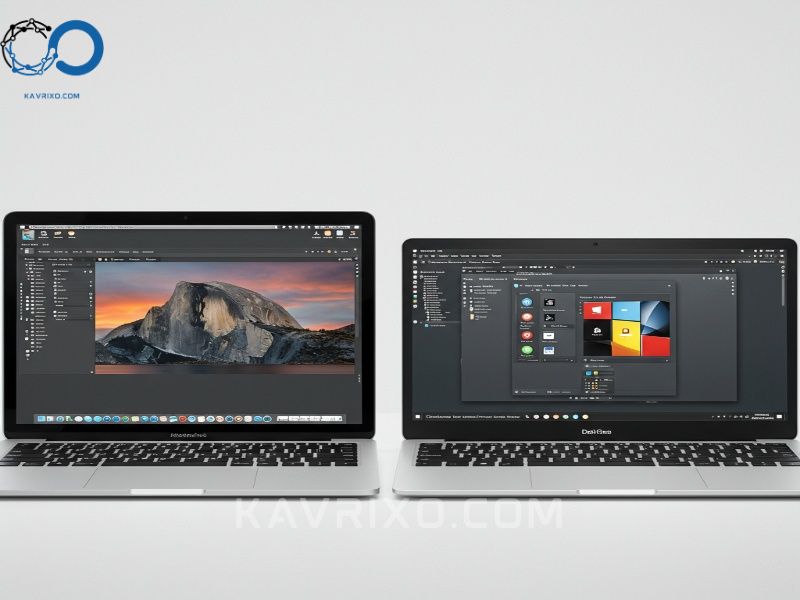If you work in the creative industry today—whether you’re a professional photographer, a motion graphics designer, or a dedicated video editor—your laptop isn’t just a tool; it’s your entire workshop. And when that workshop runs on the demanding suite of applications we collectively call Adobe Creative Cloud (CC), picking the right machine is absolutely paramount.
I’ve spent years consulting with creative studios and individual freelancers, and the single biggest bottleneck I see isn’t a lack of talent, but a lack of processing power. There is nothing more frustrating than waiting 45 minutes for a 4K render, or watching your system freeze while applying a simple filter in Photoshop. When you invest in the best laptop for Adobe Creative Cloud, you aren’t just buying hardware; you’re buying time, efficiency, and sanity.
This guide isn’t about listing generic “good” laptops. We are diving deep into the technical specifications and architectural choices required to handle the specific, heavy loads generated by applications like Premiere Pro, After Effects, Photoshop, and Illustrator. We’ll cut through the marketing jargon and tell you exactly what components you need to look for to ensure your next machine is truly the best laptop for Adobe CC.

Contents
- 1 The Non-Negotiable Requirements: What Adobe CC Really Needs
- 2 Deep Dive by Application: Tailoring Specs to Your Workflow
- 3 Essential Laptop Features Beyond Raw Power
- 4 The Contenders: Reviewing the Best Laptop for Adobe Creative Cloud
- 5 Final Verdict and Pro Tips for Optimization
The Non-Negotiable Requirements: What Adobe CC Really Needs
The Adobe Creative Cloud suite, particularly the video and 3D applications, demands resources aggressively. They don’t just need a fast computer; they need a balanced system where the CPU, RAM, GPU, and storage work together seamlessly. Skimping on one component inevitably creates a performance bottleneck that affects your entire workflow.
CPU: The Engine of Creativity
The Central Processing Unit (CPU) is the brain of your operation, handling all the complex calculations, rendering instructions, and overall system management. When seeking the best laptop for Adobe Creative Cloud, we need to focus on two key CPU metrics: core count and clock speed.
Core Count vs. Clock Speed: Finding the Balance
For many years, the advice was simple: prioritize high clock speed. That still holds true for single-threaded tasks (like simple photo editing or basic Illustrator manipulation). However, modern Adobe applications, especially Premiere Pro, After Effects, and specialized Photoshop filters, are highly optimized for multi-core performance.
- For General Design (Photoshop/Illustrator): A CPU with high single-core turbo clock speeds (4.5 GHz+) is crucial. An Intel Core i7 (H or HK series) or an AMD Ryzen 7 (H or HX series) is a good minimum.
- For Video Editing (Premiere/After Effects): You need high core counts (8 cores minimum, 10 or more is ideal). This allows the application to split the rendering load across multiple threads, dramatically reducing export times. Look for the higher-end H-series chips (i9 or Ryzen 9).
Expert Insight: Don’t be fooled by U-series processors (Ultra Low Power). While they offer fantastic battery life, their sustained performance under heavy load is insufficient for professional Creative Cloud work. Always target the high-performance H/HK/HX chips.
RAM: The Multitasking Backbone
RAM (Random Access Memory) is the short-term memory your laptop uses to actively work on files. When you open a 5GB Photoshop file, it’s loaded into RAM. When you open three timelines in Premiere Pro, they sit in RAM. Running out of RAM means your system starts swapping data to the much slower SSD, which is a death sentence for performance.
Minimum vs. Optimal RAM for Creative Professionals
Adobe’s official minimum requirements are, frankly, misleading for professional users.
- 16 GB RAM (The Absolute Minimum): This is acceptable only if you stick to basic graphic design (Illustrator, smaller Photoshop files) and never multitask. As soon as you open Chrome, Spotify, and a video project, you’ll hit the ceiling.
- 32 GB RAM (The Sweet Spot): This is what I recommend to 90% of creative professionals. 32GB allows you to run Premiere Pro, Photoshop, and a dozen browser tabs simultaneously without major slowdowns. For 4K video editing, 32GB is essentially mandatory for real-time playback.
- 64 GB RAM (The Power User): If you specialize in 6K/8K video, complex 3D rendering (Dimension), or heavy After Effects compositions with dozens of layered effects, 64GB provides the necessary buffer to maintain fluid operation.
Crucial RAM Detail: Ensure the laptop you choose has upgradeable RAM if possible, or is configured with the highest possible speed (DDR5 is current standard) right out of the box.

GPU: Accelerating the Visuals
The Graphics Processing Unit (GPU) used to be secondary for designers, but modern Adobe applications leverage GPU acceleration (via CUDA or OpenCL) for specific, heavy-lifting tasks.
Why Dedicated VRAM Matters for Rendering
In applications like Premiere Pro and After Effects, the GPU handles real-time effects (like Warp Stabilizer, lumetri color correction, and heavy transitions), complex masking, and final rendering acceleration.
- VRAM (Video RAM): This is memory dedicated solely to the GPU. For 4K video editing, I strongly recommend a minimum of 8 GB of VRAM. For 6K/8K or intensive After Effects work, 12 GB or 16 GB is highly desirable.
- Integrated vs. Dedicated: Avoid integrated graphics (GPUs built into the CPU, like Intel Iris Xe) if video editing is part of your workflow. You absolutely need a dedicated NVIDIA GeForce RTX or AMD Radeon Pro GPU. These cards feature the core architecture and dedicated VRAM necessary for reliable acceleration.
Pro Tip: NVIDIA GPUs historically have better optimization through CUDA cores for Adobe products, particularly Premiere Pro and After Effects, though AMD has made significant strides recently. When searching for the best laptop for Adobe CC, prioritizing an RTX card (e.g., RTX 3070, 4070, or better) is often the safer bet for maximum compatibility and speed.
Storage: Speed and Capacity
If your CPU and GPU are the speedsters, your storage is the track. If the track is slow, nothing else matters.
NVMe SSDs are Crucial
We are long past the days of using SATA SSDs or, heaven forbid, mechanical hard drives (HDDs) for creative work. You need an NVMe (Non-Volatile Memory Express) Solid State Drive. NVMe SSDs connect directly through the high-speed PCIe lanes, offering read/write speeds that are five to ten times faster than older SATA SSDs.
- Why Speed Matters: Fast storage is critical for caching, quick application loading, and especially for video editing where the system must read and write multiple high-bitrate video streams simultaneously.
- Capacity: Creative files are massive. A 512 GB drive will fill up instantly. Aim for a 1 TB NVMe drive as the primary working drive, and ideally, have a secondary internal drive or rely heavily on fast external Thunderbolt 4 storage.
Deep Dive by Application: Tailoring Specs to Your Workflow
While the overall goal is finding the best laptop for Adobe Creative Cloud, the optimal configuration shifts depending on whether your primary work is static design or dynamic video.
Premiere Pro & After Effects (Video Editing Requirements)
Video editing is the most taxing activity within the Creative Cloud suite. It requires high sustained performance, not just quick bursts.
| Component | Minimum for 4K Editing | Optimal for 6K/8K or Heavy VFX |
|---|---|---|
| CPU | i7 (H-series, 8+ cores) | i9 or Ryzen 9 (12+ cores) |
| RAM | 32 GB DDR4/DDR5 | 64 GB DDR5 |
| GPU | RTX 3060/4060 (6-8 GB VRAM) | RTX 4070/4080 (12-16 GB VRAM) |
| Storage | 1 TB NVMe SSD | 2 TB NVMe SSD + Fast External Storage |
If you are a heavy After Effects user, you must prioritize RAM and VRAM. After Effects loves to cache complex compositions in RAM, and its rendering engine heavily utilizes the GPU’s VRAM for effects and motion blur. Don’t compromise here if motion graphics are your bread and butter.

Photoshop & Illustrator (Photography/Design Needs)
While still demanding, Photoshop and Illustrator are less obsessed with core counts and more focused on single-core speed and sheer RAM capacity—especially when dealing with massive, multi-layered smart object files (e.g., 20,000 x 20,000 pixel prints).
- Photoshop: Requires high clock speed and massive RAM. If you regularly handle large format files or use intensive filters like Neural Filters (which are GPU-accelerated), 32GB of RAM is essential. The GPU is important but less critical than in video editing; a mid-range dedicated GPU (or even a high-end integrated GPU if paired with a powerful CPU like the Apple M-series) will suffice.
- Illustrator: This application is generally CPU-bound and thrives on high single-core performance. RAM is important for complex vector files, but the GPU plays a smaller role unless you are using advanced 3D effects or complex raster effects within the program.
Lightroom & Audition (Lighter but Still Demanding Tasks)
Lightroom Classic benefits hugely from fast SSDs (for catalog access) and CPU speed (for processing raw files). While it doesn’t need an RTX 4090, having a modern CPU with excellent single-core speed ensures quick previews and library loading. Audition, being mostly CPU-intensive, relies on a high core count if you are mixing dozens of tracks with real-time effects.
Essential Laptop Features Beyond Raw Power
A screaming-fast processor is useless if the screen is inaccurate or the machine overheats. When choosing the best laptop for Adobe Creative Cloud, we must evaluate the ecosystem around the core components.
Display Quality: Color Accuracy is King
As a creative professional, if your screen doesn’t accurately represent color, your final output will always be wrong. This is perhaps the most overlooked, yet critical, element.
Understanding Color Gamuts and Brightness
- sRGB: The standard for basic web use. Insufficient for professional work.
- DCI-P3: The standard for digital cinema and HDR content. You want a display that covers 95% to 100% of the DCI-P3 gamut. This is often found in high-end OLED or Mini-LED displays.
- Adobe RGB: Crucial for print-focused designers and photographers, as this gamut covers a wider range of colors reproducible in print.
- Calibration: Look for laptops that are factory-calibrated or offer excellent calibration software.
Screen Technology: OLED and Mini-LED displays offer superior contrast and true blacks, which is vital for precise color grading in video and photo editing. Aim for at least 400 nits of brightness for comfortable outdoor or brightly lit studio use.

Connectivity and Portability
A powerful laptop needs powerful connections.
The Necessity of Thunderbolt 4
Thunderbolt 4 (or USB4/USB-C with high bandwidth) is a non-negotiable feature. Why?
- External Storage: It allows you to connect lightning-fast external NVMe drives or RAID arrays for efficient project backups and overflow storage.
- Docking: You can run two high-resolution 4K monitors and all your peripherals through a single Thunderbolt dock, turning your portable laptop into a desktop workstation instantly.
While portability is nice, remember that the most powerful creative laptops (16-inch and above) often weigh more because of the robust cooling systems required. Don’t prioritize extreme thinness over thermal performance.
Cooling and Battery Life: The Performance Trade-Off
This is where the rubber meets the road. High-performance CPUs and GPUs generate intense heat. If a laptop cannot dissipate that heat efficiently, it will “throttle”—meaning the CPU automatically slows itself down to prevent damage. Throttling is the enemy of sustained rendering performance.
- Cooling Systems: Look for laptops with large vapor chambers, dual fans, and significant venting. Read professional reviews specifically mentioning sustained thermal performance under stress.
- Battery Life: Be realistic. When running Premiere Pro or After Effects, even the best laptop for Adobe Creative Cloud will drain its battery rapidly (often 1.5 to 3 hours). These programs require maximum power draw, so plan to work plugged in during intensive tasks. Battery life is primarily a concern for light tasks like writing or browsing.
The Contenders: Reviewing the Best Laptop for Adobe Creative Cloud
When we apply all these requirements, only a handful of laptops consistently meet the high bar set by professional Adobe users.
The Windows Powerhouse
The Windows ecosystem offers the highest potential specification ceiling and flexibility, often providing superior VRAM options and upgradability.
High-End Windows Options (Dell XPS, Razer Blade, HP ZBook)
- Dell XPS 17: Known for its superb InfinityEdge display (often DCI-P3 validated) and great thermal management for its size. It’s a fantastic all-rounder for design and moderate video work. We recommend configuring it with the highest RAM/CPU options available.
- Razer Blade Series: Often overlooked outside of gaming, the Blade 16 and 18 are stellar creative workstations. They pack high-wattage NVIDIA RTX GPUs (offering top VRAM tiers) and excellent OLED/Mini-LED displays, making them incredibly potent for After Effects and 8K workflows.
- HP ZBook / Lenovo ThinkPad P-Series: These are mobile workstations designed specifically for professional software certification and reliability. While perhaps less stylish, they prioritize ECC memory (error correction) and professional-grade NVIDIA Quadro/RTX Ada Generation GPUs, making them the choice for enterprise-level VFX and 3D work.
The Apple Ecosystem Champion
Apple’s transition to its own Silicon (M-series chips) has fundamentally changed the landscape, offering unparalleled efficiency and performance per watt.
The MacBook Pro (M-Series) Advantage
The MacBook Pro (14-inch and 16-inch) running the M2 Pro, M2 Max, M3 Pro, or M3 Max chips are arguably the gold standard for many creative professionals today.
- Unified Memory: Apple’s system uses “Unified Memory,” meaning the RAM is shared directly between the CPU and GPU with extremely high bandwidth. This means 32GB of Unified Memory often performs closer to 48GB or 64GB of standard system RAM in Adobe benchmarks, especially in Premiere Pro.
- Media Engines: The M-series Max chips include dedicated hardware media engines for encoding/decoding ProRes and H.264/HEVC, which provides lightning-fast export times in Premiere Pro.
- Display: The Liquid Retina XDR (Mini-LED) displays are industry-leading in brightness and color accuracy (P3 gamut).
The Catch: Apple Silicon is not user-upgradeable. You must pay for the RAM and storage you need upfront. For serious video work, I strongly recommend a minimum of 36 GB (Pro chip) or 64 GB (Max chip) of Unified Memory when purchasing.

The Budget-Conscious Professional
If your budget limits you from reaching the $3,000+ top tier, you can still find a powerful machine, provided you make smart compromises.
Smart Compromises for Mid-Range Performance
If you primarily do 1080p video or heavy Photoshop work, you can look for machines in the $1,500 – $2,000 range, but focus on these specs:
- Prioritize RAM: Get 32GB first. You can always use external storage, but you cannot compensate for lack of RAM.
- Focus on Last-Generation GPUs: A refurbished or slightly older model with an RTX 3060 or 3070 will offer vastly superior performance to a brand new laptop with a U-series CPU and integrated graphics.
- Screen Compromise: You might have to settle for 100% sRGB instead of 100% DCI-P3, but ensure the screen is at least bright and matte to reduce glare.
Final Verdict and Pro Tips for Optimization
The search for the best laptop for Adobe Creative Cloud ultimately comes down to balancing budget, portability, and your primary applications.
If video editing (Premiere/After Effects) is your main job, prioritize a high-core CPU, dedicated GPU with 12GB+ VRAM, and 32GB+ RAM. If static design (Photoshop/Illustrator) is your focus, prioritize high CPU clock speed and 32GB RAM.
Pro Tips for Maximizing Creative Cloud Performance
Even with the best hardware, performance can degrade over time if you don’t maintain your system.
System Maintenance and Software Optimization
- Dedicated Scratch Disks: In Premiere Pro and Photoshop preferences, designate a separate, clean NVMe partition or external Thunderbolt drive specifically for your cache and scratch files. Do not let these massive files fill up your main operating system drive.
- Regular Cache Clearing: Adobe applications store huge amounts of temporary data. Regularly clear your media cache in Premiere Pro and After Effects—this can free up hundreds of gigabytes of space and often resolve unexplained stability issues.
- Driver Updates: Always ensure your dedicated GPU drivers (especially NVIDIA Studio drivers) are the latest version. Adobe frequently optimizes its software performance based on these driver releases.
- Power Settings: Ensure your laptop is set to “High Performance” mode (or plugged into power on macOS) when running rendering tasks. Performance on battery power is significantly reduced.
Choosing the right machine can transform your creative process from a frustrating struggle into a smooth, enjoyable workflow. By focusing on balanced, high-end components—especially RAM, VRAM, and fast NVMe storage—you’ll ensure that the best laptop for Adobe Creative Cloud is sitting right on your desk, ready to handle any project you throw at it.

